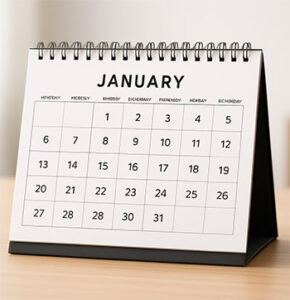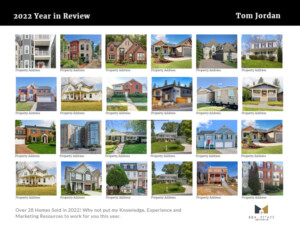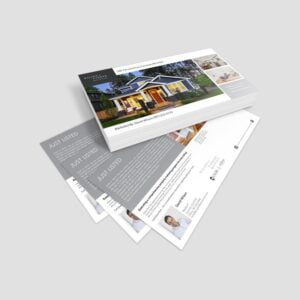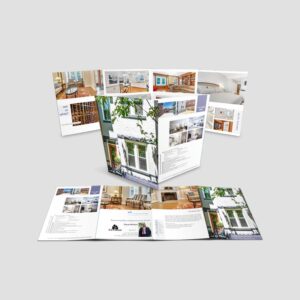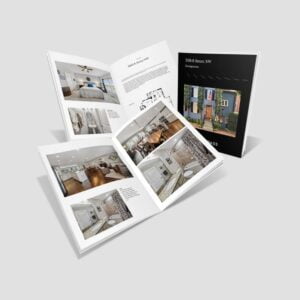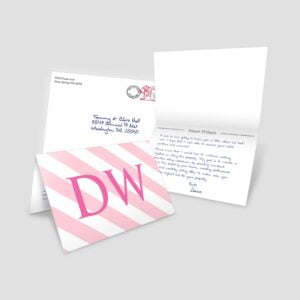Paper Choices for Booklet and Book Printing
WayBetterPostcard Guide to Booklet and Book Printing:
Choosing the right paper for your printed book may seem overwhelming as you probably are not doing this every day!. We are doing this everyday and are here to help. You can always reach out to us via phone or email if you just want to discuss what might be your best selections. In this article we have put together a guide to provide you our best insight. As discussed, several factors can influence your choice of paper when printing a book: type/content, page count, binding style, and your budget. Furthermore, certain types of binding styles may have specifications that may limit or remove some options.
Drawing on years of industry experience, and unlike most printers we do all our book binding here in our facility and do not need to send them out. them with copy machines we explain how to balance these factors to make the best paper choices for your project.
Choosing the paper for booklet or book printing
With all the effort you’ve gone to in composing a book, or even personalizing a template, you'll want your printed editions to reflect your hard work and creativity. Obviously just about all printed books are made of paper, however there is huge range of paper options you can choose from when deciding what is best. We offer more papers than you see online, and have access via our relationships with over 32 paper mills and distributors to just about any paper in the world, the fact is most likely you don't need them. However we believe we have placed the best types of paper in the each representative product. What is found as the "default setting or choice" as well often reflects our best choice based on experience, most common applications and value.
If you have interest we do have a sample book with the paper stocks with various finishes and coatings, we offer. You can order here for $8.
Most books — there are exceptions such as children’s board books and some comics, for example — will need two kinds of paper: for the interior pages and for the cover. the cover paper will have a coated surface and be thicker so that it offers greater protection and shows off full-color printing and artwork to best advantage, while the interior pages may or may not be coated and will usually be thinner because they’re protected by the cover and may only be printed with black-and-white text in many cases.
Unlike a brochure (the same continuous sheet cut, trimmed and folded) that is printed on a single type of paper, the six binding styles we offer, allow for you, to select more than one kind of paper.
Most common scenarios are choosing the kind of paper to be used for
COVER - The covers of the booklet/book pages
TEXT - the interior pages
Then from there the most common set of practices are to select a thicker paper that offers greater protection, while the interior pages will usually be thinner because they’re protected by the cover and at times may only be printed with black-and-white text.
At this point you might be thinking you have heard the terms "Cover Papers" and/or Text Weight Papers" before?. Book printing at one time was the major source of communication and used for learning and publishing in the world, because of this, the common practice of referring or categorizing all papers as either thicker* or thinner*, evolved into what is still "common paper reference today" Cover Weight Papers - Thicker and Text Weight Papers - Thinner.
*Thickness might not be the best term and technically is just a characteristic of a paper. However it sums up the main difference between the two in the customer or consumer world as well as many in printing use as terms. Actual paper weight, the amount of pulp used in one sheet when manufactured or milled, is the true method of classifying papers.
Then next the most common element to select is the surface of the paper when it is made at a paper mill. The paper manufacturer can either add a thin coating to the paper to create a much smoother surface and more fined finish called - Coated Paper or not, called Uncoated.
Finish Characteristics
Uncoated - (a.k.a. offset) Ideal for writing with pencils or any pen and provides for excellent readability visually for black type or text as in the pages of a book. This remains true even if the size of the letters get smaller the contract still provides for the best reading of any type.
Coated - Allows for a better visualization of images, artwork or colors, and a more finished look. At times can add some durability as well
With these elements in mind often for the books we print the cover paper will be coated and be thicker so that it offers greater protection and shows off full-color printing and artwork to best advantage, while the interior are usually thinner pages may or may not be coated however are protected by the cover.
There are exceptions to the above common practice. One popular product we offer however can feature Cover Paper for every page. Based of the idea of more than a property brochure, our Property booklets can be up to 20 pages and use up to 14pt (very thick) paper for each page. This are often used for luxury listing or fine properties or these with some unique aspect that allows the listing to be better featured or presented.
Our large-size coffee-table books or a luxury books using grommet, glue or screw binding can often use 3 or 4 types of papers. Maybe a thin translucent type paper to define each section or a more architectural type paper for drawings or fold outs can include blueprints. We can look at the exceptions, add-ons, and other options later but all books need a cover and an interior based on these fundamental configurations.
Interior pages
The most important factor to guide you when deciding on your book’s interior paper is the content. Does it feature hi res color photos and graphics or other important visual elements? or it it purely black text/type?. There are 3 kinds of paper most popular for this application. As we mentioned before the ones with coating are referring to the coting the paper mill adds. In these options below they look of these are more in a "semi" capacity. For example Gloss is not a super shinny photo luster type finish, they are much more subtle finishes.
Gloss coated paper is the best option if you are printing an illustrated book, agent or brokerage brand book, or a graphic story telling book or any book which relies on high-quality artwork. Gloss coated paper is designed to give excellent full-color and black-and-white image reproduction, making the visuals really crisp and the colors bright.
Matte Coated Paper
Matte coated paper is another great option for image reproduction but has a silky rather than glossy coating which highlights the heavier tones and contrasts and dark colors well. We recommend this for property or listing booklets or any of our High-end luxury books or coffee table books, photo magazines, art books, which need both high-resolution pictures and clear, readable text would benefit from interior ages printed on matte art paper.
Uncoated or Offset Paper
Offset paper is not coated, so it is more absorbent and natural-looking, with a slightly rougher surface. Most paperback novels use offset paper for the interior pages, to give you an idea of this paper type. Because of its higher absorbency, it’s also a great option for any book in which someone may need to write or draw — such as a journal, a coloring book, a workbook, and so on.
Size
Your book’s overall dimensions and the size of the pages also influence your paper choices. In most cases, smaller books can have thinner paper and larger books need thicker paper. The most popular printing sizes for real estate books are 8.5″ × 11″ Portrait, 8.5'x8.5' Square and 11"x8.5 or larger Landscape. For any of those either an 80lb or 100lb Matte coated text or a 70lb uncoated paper would be an excellent choice for the interior pages.
Page count
If your book has fewer than 24 pages, any gloss, matte, or offset paper thinner than 200 gsm should be fine, depending on your books use. For example, a coloring book with only 20 pages would be fine with 140 gsm offset paper. That will make the book open flat easily and the printed outline pictures will look clear and be large enough to color in. If the book is for children, that’s also a good choice because it’s less likely to tear compared to, say, 80 gsm offset paper.
If your book has between 24 and 32 pages and you’d like it to have a printable spine, then you’ll need to choose paper thick enough to make up the spine width. In this case, 157 gsm to 200 gsm paper is necessary.
How to choose paper for your book’s interior pages
For example, let’s say you’re printing a 28-page perfect bound luxury book (our LUXLINE) book and you want a spine. We would suggest choosing matte cover papers for the interior pages as it will make up the correct width for paperback binding and will reproduce the pictures nicely.
With any book that has over 32 pages, you can bind it as either a hardcover or softcover book. For a hardcover book between 32 and 48 pages, 157 gsm paper would be perfect. This would give your book sufficient depth to be bound in hard casing and also be more durable and long-lasting. For a paperback — also called softback, softcover, or perfect bound — book of that length, you could choose from 128 gsm, 157 gsm, or 200 gsm depending on whether it was illustrated or plain text and the size of your budget.
Once a book goes over 48 pages, the thickest paper choice is 157 gsm paper. 200 gsm paper is too thick and will lead to a bulky, unwieldy volume with pages that are difficult to open and turn.
How to choose paper for your book’s interior pages
However, there’s an exception to this rule. If you’re printing a spiral or wire-o bound book, you only need to make sure that the book thickness is between 8 mm and 20 mm. If it will be thicker than that, contact us first and we will help you choose the best paper option for your needs.
Your budget
Several factors influence how you work out your budget for book printing. Cost will vary. So, heavy gloss coated paper is more expensive than thin offset paper, for example. Your choice of paper will ultimately change the overall weight of your product, too, so bear that in mind. Heavier, bulkier books cost more to store, ship, and distribute.
How to choose paper for your book’s cover
The paper you choose for your books cover will be influenced by many of the same factors as the interior pages. But you’ll also need to consider the binding style. Here, we’ll look at hardcover bindings, softcover bindings, and board books.
Grommet, Screw, hardcover or hinge binding cover paper
For hardcover, grommet, hinged and screw binding books, 157 gsm matte or gloss art paper wrapped on 2 mm, 2.5 mm, or 3 mm board is the most popular choice. The more pages the interior has, the thicker the board will need to be. Some people prefer to use a special material to wrap the board casing other than paper. Leatherette and cloth coverings can work well or thin plastic.
Perfect bound binding cover paper
For perfect bound books, 200 gsm gloss or matte are excellent choices. The paper must be thicker than for hardcovers, as there’s no board. The paper alone is the cover. But as with hardcovers, the higher the inner page count of your paperback book, the thicker the cover paper should be. In rare circumstances, you may have a book with the same paper for both the interior and cover pages. In this case, we say the book is “self-covered”.
Board book cover paper
Board books are a special case compared to other styles, as they’re often self-covered. Typically, all of a board book’s pages are made from 2 mm board wrapped in C1S (coated on one side) paper. The coated surface faces outward and is printed, while the inner surface is glued to the board. Some high-end board books will have separate covers made using 157 gsm matte or gloss art paper wrapped on 3 mm board. Occasionally, children’s board books have added hardcovers, often with foam inserts to give them a padded, tactile effect.
Board book cover paper
Specialist papers and paper choices
As we mentioned at the top, sometimes you’ll want to choose more than just two paper types—one for the cover and one for the interior pages. For example, hinged brand book or fine art photography coffee-table book may use:
Coated gloss paper for the book cover
Coated matte paper for the interior
Translucent architectural paper inserts to protect the color plates
Textured colored paper for the endpapers
Printed uncoated paper for the slipcase interior
Specialist papers and paper choices
There’s no one-size-fits-all rule you can follow when deciding how to choose the right kind of paper for your book. It all depends on your individual needs. But knowing that in itself make the decision process easier. Because once you understand that not all the hundreds of papers would work, you can more rapidly hone in on the ones that will.
So, you can see that when you’re selecting paper options for your book, there’s a lot to consider. Factors that influence your decision range from your book’s length, binding style, spine thickness, content, and how much money you have to spend.
